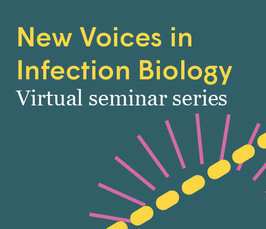How Cryptosporidium invades and manipulates its intestinal host cell | New Voices in Infection Biology
- Date: Feb 3, 2021
- Time: 04:00 PM (Local Time Germany)
- Speaker: Amandine Guerin
- University of Pennsylvania
- Location: Zoom video conference
- Host: Silvia Portugal
- Contact: vseminars@mpiib-berlin.mpg.de

If you are interested in joining the seminar, please contact: vseminars@mpiib-berlin.mpg.de
Once registered, you will receive a zoom conference link 30 mins before the talk starts - please sign in using your full name.
Talk abstract:
The diarrheal pathogen Cryptosporidium is a leading cause of child mortality. No vaccine is available and the current drug treatment is ineffective. The infection is restricted to intestinal epithelial cells in which the parasite is confined to the apical brush border surrounded by a parasitophorous vacuole. The unique way by which Cryptosporidium invades and manipulates the enterocyte is particularly interesting but poorly understood. Indeed, the moving junction complex, key to invasion in other apicomplexan parasites, is missing. The goal of my research is to decipher the invasion mechanism and identify secreted effectors responsible for host modifications, including the host actin pedestal formed at the infection site. The rhoptry, an apical organelle known to be secreted during invasion by other apicomplexans, is a strong candidate for effectors injection, but unfortunately, only a single Cryptosporidium rhoptry protein has been identified so far.
Using live microscopy, we were able to follow Cryptosporidium
invasion. We genetically modified parasite and host cells to
simultaneously visualize the parasite invasion with dynamics of host
membranes or actin cytoskeleton. This allowed us to follow host actin
polymerization at the infection site which occurs seconds after
attachment and visualize parasite internalization over the course of 2
minutes. We also developed a discovery pipeline to identify numerous
rhoptry bulb proteins of Cryptosporidium. Interestingly, they display diverse localizations after secretion including the parasitophorous vacuole, the host/parasite interface, and the cytoplasm of the host cell. One candidate, RopA,
is particularly interesting as we found it injected into the host cell
where it is restricted to the apical end of polarized cells, both in vitro and in vivo.
We found this protein to be associated with the host protein LMO7 by
both microscopy and biochemical experiments. Mice deficient in LMO7, a
cell junction regulator and F-actin organizer, display a reduced ability
to control Cryptosporidium infection.